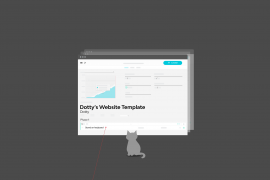I was recently talking to a fellow studio owner about changes in our industry. I said that we were finding more and more clients wanting strategic marketing advice along with their design. He retorted that he had set up a marketing arm to offer this type of service specifically.
The fact is we are now all marketers.
In 2009 McKinsey&Company staffers David Court, Dave Elzinga, Susan Mulder, and Ole Jørgen Vetvik, released the results of research conducted with more than 20,000 customers across five industries and three continents. Their research showed that the buying process is now collaborative and this makes it difficult to influence customers if relying solely on one-way, push advertising.
This may mean that design studios must not only recognise that everyone is responsible for marketing but also impose some kind of accountability on all studio members. In essence, studios need to become marketing vehicles. The new business development/account service will look different: there will be a greater distribution of existing marketing tasks to other other parts of the studio. This is in part necessary because our clients are now sourcing services in a different way; they have become empowered consumers.
Empowered consumers
Our potential clients now outreach for information, services and products. Marketing used to be driven by companies; “pushed” on consumers through traditional advertising, direct marketing, sponsorships, and other channels. At each point marketers would attempt to sway their decisions.
In today’s decision journey, consumer-driven marketing is increasingly important as customers seize control of the process and actively “pull” information helpful to them.
The McKinsey research found that “two-thirds of the touch points during the active-evaluation phase involve consumer-driven marketing activities, such as Internet reviews and word-of-mouth recommendations from friends and family, as well as in-store interactions and recollections of past experiences. A third of the touch points involve company-driven marketing. Traditional marketing remains important, but the change in the way consumers make decisions means that marketers must move aggressively beyond purely push-style communication and learn to influence consumer-driven touch points, such as word-of-mouth and Internet information sites.”
For design studios this means turning all employees into marketers who have the potential to develop word of mouth referrals and ‘sell’ our services.








